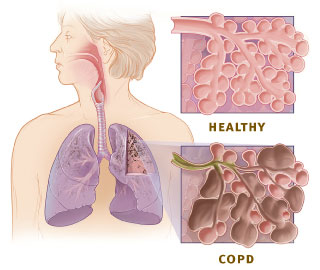In Frozen shoulder, shoulder is frozen, and it is almost same as the literally meaning. There is limitation in range of movement of shoulder joint to variable extent.
Frozen shoulder is loosely coined to a host of diseases where there is painful limitation of movement of shoulder joint.
As defined by the the American Shoulder and Elbow Surgeons, it is a condition of uncertain etiology characterized by significant restriction of both active and passive shoulder motion that occurs in the absence of a known intrinsic shoulder disorder.
This is also known as adhesive capsulitis, and is a common condition mostly in women involving pain in the shoulder joint which worsens in the middle of night awakening the sufferer from sleep.
Other conditions to which the name frozen shoulder is loosely coined may be the “Painful Arch Syndrome” of supraspinatous bursitis, calcific tendonitis, bicipital tenosynovitis; glenohumeral and acromioclavicular arthritis; and tears of the rotator cuff; and shoulder tumors.
It typically lasts from days to months with spontaneous resolution in six to nine months; and may repeat in a cyclical manner. Finally, it may end up in permanent restriction of movement.
It is the Magnetic Resonance Imaging (MRI) that can help in reliable diagnosis of the condition and facilitate treatment.
Potentially useful MR findings in frozen shoulder include thickening of the coraco-humoral ligament (CHL) that attaches itself to coracoid process of scapula (Shoulder blade) to the humeral head (Arm bone).
Also there can be obliteration of the fat triangle under the coracoid process. MR images obtained after an intravenous gadolinium injection, enhancement of the joint capsule and synovial membrane and enhanced fibrovascular tissue in the rotator cuff interval may be helpful in the identification of frozen shoulder.
Some studies have demonstrated that the coracohumeral ligament (CHL) is shortened and thickened in frozen shoulder, thus limiting external rotation.
Histologically, the limitation of external rotation is due to fibroblastic proliferation within the CHL. Such histological changes are very similar to those found in Dupuytren's superficial fibromatosis.
Local steroid injection, physiotherapy and simple analgesics help a lot to resolve the condition. Final answer can be surgery in some resistant cases.
Frozen shoulder is loosely coined to a host of diseases where there is painful limitation of movement of shoulder joint.
As defined by the the American Shoulder and Elbow Surgeons, it is a condition of uncertain etiology characterized by significant restriction of both active and passive shoulder motion that occurs in the absence of a known intrinsic shoulder disorder.
This is also known as adhesive capsulitis, and is a common condition mostly in women involving pain in the shoulder joint which worsens in the middle of night awakening the sufferer from sleep.
Other conditions to which the name frozen shoulder is loosely coined may be the “Painful Arch Syndrome” of supraspinatous bursitis, calcific tendonitis, bicipital tenosynovitis; glenohumeral and acromioclavicular arthritis; and tears of the rotator cuff; and shoulder tumors.
| Image via Wikipedia |
It typically lasts from days to months with spontaneous resolution in six to nine months; and may repeat in a cyclical manner. Finally, it may end up in permanent restriction of movement.
It is the Magnetic Resonance Imaging (MRI) that can help in reliable diagnosis of the condition and facilitate treatment.
Potentially useful MR findings in frozen shoulder include thickening of the coraco-humoral ligament (CHL) that attaches itself to coracoid process of scapula (Shoulder blade) to the humeral head (Arm bone).
Also there can be obliteration of the fat triangle under the coracoid process. MR images obtained after an intravenous gadolinium injection, enhancement of the joint capsule and synovial membrane and enhanced fibrovascular tissue in the rotator cuff interval may be helpful in the identification of frozen shoulder.
Some studies have demonstrated that the coracohumeral ligament (CHL) is shortened and thickened in frozen shoulder, thus limiting external rotation.
Histologically, the limitation of external rotation is due to fibroblastic proliferation within the CHL. Such histological changes are very similar to those found in Dupuytren's superficial fibromatosis.
Local steroid injection, physiotherapy and simple analgesics help a lot to resolve the condition. Final answer can be surgery in some resistant cases.
...
Click here to Subscribe news feed from "Clinicianonnet; so that you do not miss out anything that can be valuable to you !!
...






